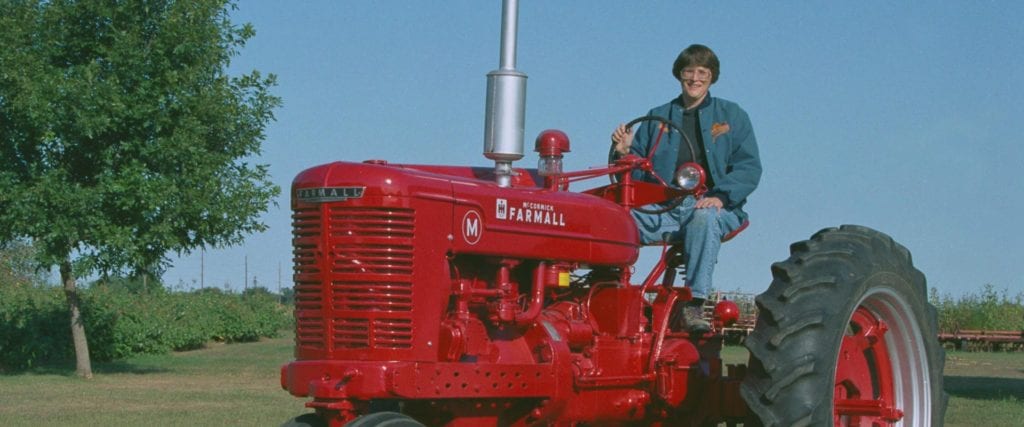Index
Introduction
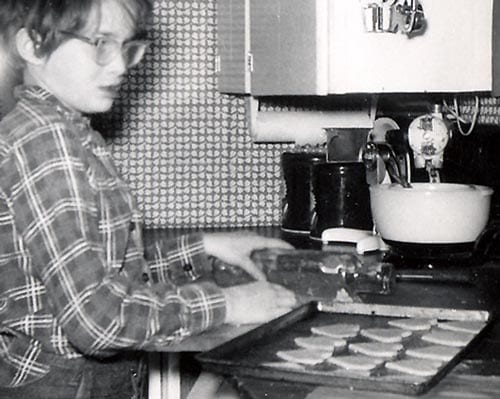
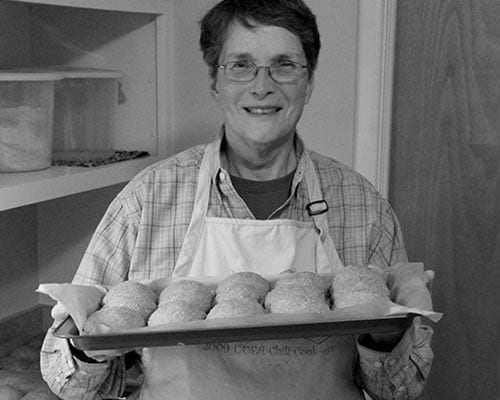
Her book, The Road I Grew Up On: Requiem for a Vanishing Era, to be released in November 2020, is a two-volume anthology written from a liberal perspective and consists of regional and neighborhood history, personal memoir, spiritual insights, other opinions, and photographs.
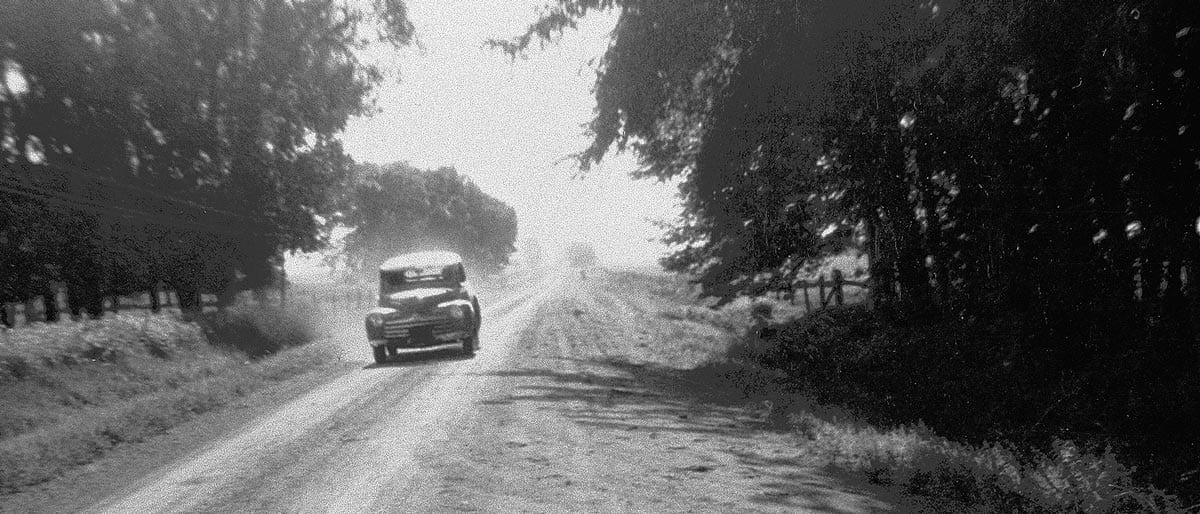
Helen edited another book, Rolfe Alumni Perspectives. The spiral-bound print version, published in 2000, is a collection of essays by students, alumni, friends, and faculty of her home town high school and includes many photos. The essays are available on the Rolfe alumni website Helen created in 1999.
She also produced several video programs. Many are posted on YouTube, where Helen has three channels: DCG1918, Gunderfriend, and RReveille.
Helen’s most popular post (over 123,000 hits), 1970s Farming, consists of home movies, filmed in the 1970s, of her father and neighborhood men farming. Her most significant video productions in recent years include two programs created from 1990 footage of Rolfe High School’s last graduating class (Class Activities, Class Interview) and an essay about women in agriculture that uses voices and images from Helen’s archives along with images of modern day women involved in agriculture.
Early Years
A fourth-generation Iowan, Helen grew up on a farm in Pocahontas County in northwest Iowa where she owns inherited farmland. Her ancestors in the Rolfe area include the Gundersons, who were farmers, and the Lighters, who published The Reveille newspaper in the early 1900s.

She holds a bachelor’s degree in physical education for women from Iowa State University, a master’s degree in instructional technology from the University of Wisconsin-Stout, and a master of divinity from San Francisco Theological Seminary. She taught physical education in Duluth, Minnesota, and Eagle Grove, Iowa; worked in sports information at North Dakota State University in Fargo; directed the YMCA of NDSU; graduated from seminary; then lived in Saint Helena, California, where she had interned at the local Presbyterian church. While in Saint Helena, she developed her audio-visual skills and adopted the business name of Gunderfriend Productions. Helen returned to Iowa in 1993, living in Gilbert just four miles north of Ames until moving to her Ames home in 2006.
Land Stewardship
Throughout her life Helen’s spirit has been strongly connected to her agrarian roots. Even so, as a young person she never felt there would be a role in agriculture for her as an adult, considering that historically, the men in her family managed and/or farmed the land. Often she has said, “Girls were not allowed to grow up and become farmers, but a girl could grow up and marry a farmer.” Nevertheless, in 1997 she started managing her own land that previously had been managed by her father, then by her only brother. She has given 220 acres of land to the Iowa Natural Heritage Foundation, while all but 77 acres of the 500-some acres she continues to own are farmed with organic practices. She credits her connections with Practical Farmers of Iowa, an organization she joined in the 1990s, as a significant factor in her growth in understanding farm issues. In 2013, PFI honored Helen with its first annual landowner appreciation award.
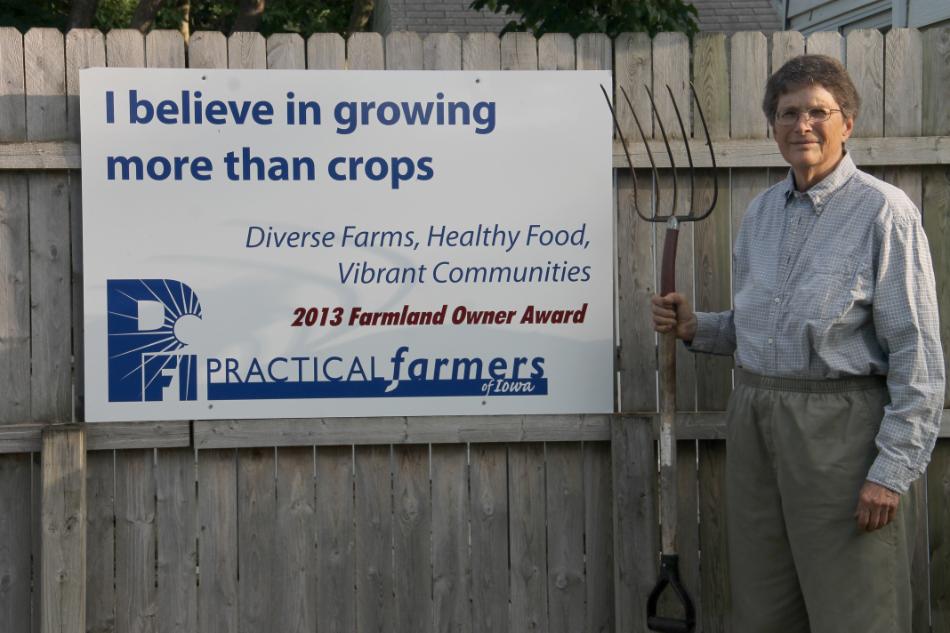
Evolution as a Visual Artist and Writer
Her book, The Road I Grew Up On, chronicles factors in her development, especially in relation to coming into her own as a farm steward. In looking back, she likes to point to some of the stepping stone events that provide clues to her evolution in relation to photography, video production, and writing.
She acknowledges the early, rather subconscious, indirect roles her parents may have had on her interest in the visual arts. Her mother, Marion Gunderson, was a watercolor artist and often went on location to paint scenes of grain elevators, barns, depots, and other dimensions of rural life. Helen’s father, Deane Gunderson, was a farmer. He often surveyed the land to evaluate a field and plan for drainage tile repairs, using a precision optical instrument somewhat like a telescope (a transit level) mounted on a tripod. Occasionally, though, he would use the transit to show Helen and her siblings some aspect of nature. She recalls one evening after supper when he drove the family to a field, set up the transit 40-yards away from a drainage ditch, pointed it toward the far bank, and allowed the siblings each look through the transit for a close-up view of young foxes (kits) playing in the grasses, rough ground, and rocks near the black earth of the fox holes.
Helen’s mother fostered the arts in the family, enrolling the older children in a painting class in Pocahontas; sometimes gathering several children around the large, round kitchen table to paint; and at other times teaching them work with clay or make jewelry with copper wire. Although Helen did not have a passion for the arts, she remembers winning a local American Legion Auxiliary Poppy Poster contest while in elementary school; drawing pencil sketches of horses and football players in her notebook during junior high study hall; earning an A+ grade for her color pencil drawings of the layers of a frog’s anatomy for a high school biology class assignment; and designing a flyer and printing copies with a spirit duplicator “ditto” machine to publicize her senior class play, Arsenic and Old Lace.
Otherwise, in her formative years, Helen had little interest in writing, other forms of self-expression, the humanities, or spiritual matters. She remembers one day as a high school sophomore, however, telling a friend in the hallway during the school noon hour that she might like to study journalism even though at the time Helen did not know what it meant to be a journalist. As it was, she could think of no career field to consider until one summer at lunch, her mother announced she had heard on the radio that Iowa State had begun to offer a major in physical education for women.
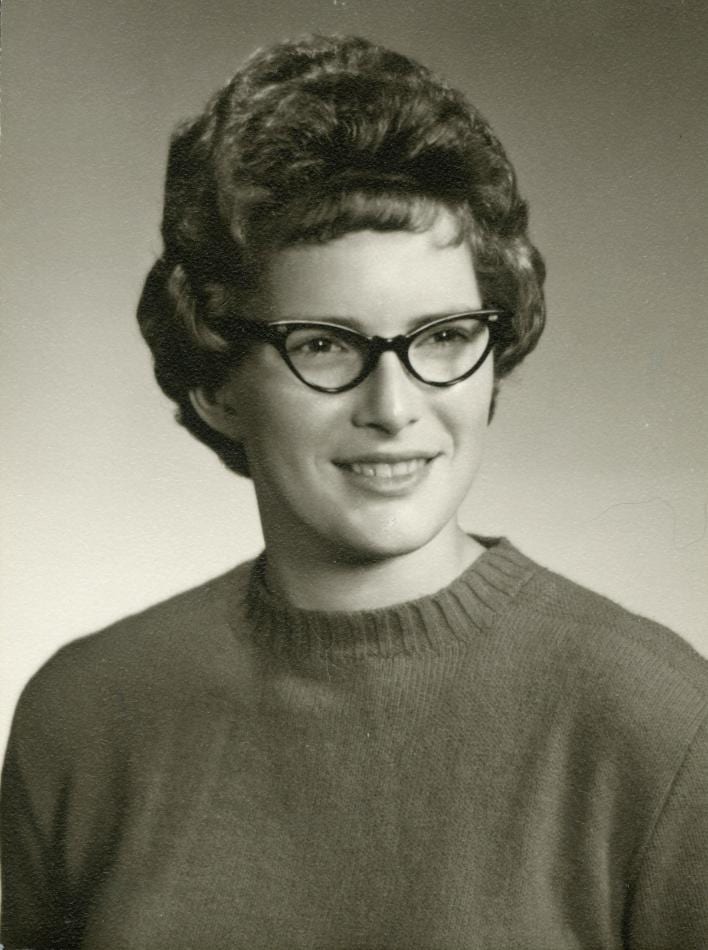
What would become one of her first significant engagements in film production occurred when she was an Iowa State senior in 1966, majoring in physical education. Education majors were required to take a one-credit course in audiovisual communications. There was only one major assignment, a wide-ranging one, asking each student to create a project of his or her choosing. Helen was not about to take on some ordinary project. Instead, she thought about the “loop films” that were slowly coming into use in her physical education classes. The new technology consisted of a short piece of 8mm movie film enclosed in a transparent, plastic cassette that could be show continuously, using a simple projector, onto a small screen in a gym to help teach a specific sports skill. Helen knew nothing about film production but rented a “Regular 8mm” movie camera at Ames Stationers on Main Street, had the clerk show her how to operate the camera, then arranged to film one of her instructors demonstrating the golf swing—not at a golf course or driving range— but out of convenience in the instructor’s back yard not far from where Helen currently lives. After she arranged for the film to be developed, she took it to the ISU Film Production Unit, not realizing how welcome she would be and how much help the staff would provide. She met with the unit’s assistant director, Richard Kraemer, had a fine conversation, left her film with him, and within a two weeks, she received a call, saying the loop film was ready for her to pick up.
In 1968 while teaching in Duluth, Helen bought a Super 8mm camera to film classroom and intramural activities. She also received a RAND grant of $500 to produce a set of loop films to aid in teaching gymnastics. When she became frustrated with her Kodak Instamatic still camera because the flash cubes did not work consistently, she visited Yoho Photo in Duluth and told them she wanted a camera that could take photographs indoors without using flash bulbs. The owner sold her a Canon 35mm single-lens reflex camera for $200. Helen was leery about learning how to use all the settings on the new camera, but the Yoho staff taught her to use it and their darkroom.
She chose not to take any television courses while working on her master’s degree in instructional technology at Stout (summer 1971 to summer 1975) because their focus was limited to studio production. She was able, however, to take a course in audio production and learned how to edit audio tape with a razor blade and what is called splice tape—a specialized adhesive for joining two pieces of tape together. The ability to edit and otherwise work with audio recordings would serve her well when she created sound tracks that included music and narration for her home movies and slide shows. Although those were not video production, per se, the planning concepts she learned from those projects and her experiences prepared her well for future video work. Her most complex slide/movie/sound project involved four slide projectors, a movie projector, audio cassette player, and two large screens on the stage of her hometown gym for the 1980 Rolfe High School all-class alumni banquet.
During fall 1971 Helen left Stout for a semester to attend Montana State University where one of her classes was the history of documentary film. Ever since that class, she has been fascinated with documentary work, and if she had her life to do over again, she might have invested herself in a career of documentary work. One important lesson she learned was how the same footage could be edited differently for propaganda purposes. For instance, smuggled scenes of the Nazi Party rallies shown in the 1934 German propaganda film, Triumph of the Will, were later used by the United States Department of Defense to produce a counter message in the Why We Fight series.
Helen utilized some of her photography, film, and audio skills while working in sports information in Fargo. Also, during those years, she developed an interest in writing. There were two threads to this development. One, in writing news releases, she had learned she could not take time to think of the perfect word for a sentence, for instance about a newly-recruited high school football star, and simply had to get the details onto paper. Two, she had learned about different forms of prayer in a series of classes at her church—the First Presbyterian Church of Fargo. One night, local nuns led a session on contemplative prayer and spoke about the value of journal writing. Helen then enrolled in a weekend intensive journal-writing workshop offered by the sisters.
In 1985, her final year at San Francisco Theological Seminary, Helen and a small group of friends participated in two workshops at the Center for Ministry, an ecumenical career planning center in Oakland, California. During the process, Helen came to understand that although she possessed a long-term fascination with audio-visual projects, she had not sufficiently valued her creativity, passion, and skills for them. Instead, she had felt she needed to pursue more legitimate work. That spring, Helen petitioned the Dean of Students Office to authorize her to earn three elective credits by enrolling in a video production class offered by the Marin County public access cable organization in lieu of taking an official seminary course. Also, instead of being open to following a conventional career path for seminary graduates, which could call one to almost any part of the country, Helen decided to return to Saint Helena, where she had completed a seminary internship. Her plan was to slow down, be among friends there, and find a path in photography, if not also video. She would live there until 1993.
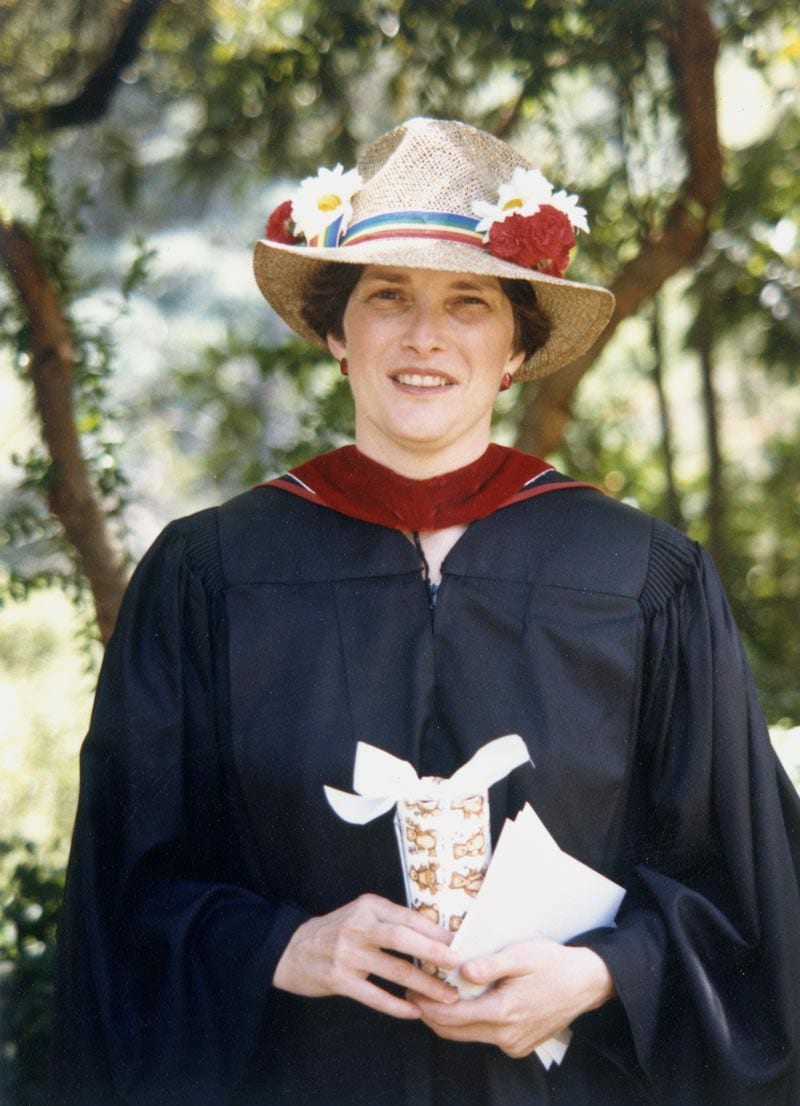
Camcorder technology with its use of video cassettes had advanced so sufficiently by 1989 that Helen bought a Super VHS camcorder. A few years later, she bought two Super VHS desktop machines that came with a controller that allowed her to do some rudimentary video editing. She also enrolled in a portraiture class at nearby Napa Valley College. Visiting professor Morrie Camhi, who was retiring from teaching at City College of San Franciso and one of the Bay Area’s most significant photographers, talked little about the technical aspects of cameras and lights but asked the students to read In Praise of Shadows, a book that contrasted principles of aesthetics and lighting in Japanese and American architecture. The insights Helen gained from Camhi and reading the book changed how, as a visual artist, she looks at people and scenes.
During her post seminary years in Saint Helena, Helen enrolled in writing workshops designed for spiritual exploration. These workshops were held at the Angela Center in nearby Santa Rosa. Much of what she wrote then became seeds for further writing included in her book. She also attended a workshop in expressive arts therapies at Sonoma State University and worked with a Marin County therapist. It was from these encounters that Helen learned the adage to “trust the process.” It has, at times, become a mantra for Helen—for life in general and creative projects. Helen also realized how much unresolved grief she had when remembering her farming grandparents and thinking about the changes in rural Iowa. She was torn, wondering whether or not to move back to the Midwest.
She often had dinner at the Good Earth restaurant in Larkspur Landing following her weekly therapy sessions. After finishing her meal, she visited the bookstore A Clean Well-Lighted Place for Books at the other end of the boardwalk of the small mall. She would sit at length, viewing the store’s excellent collection of coffee-table-style photography books, then go to the store’s bakery and have a rich, chocolate dessert. She was deeply moved by The Homeplace, a book of exquisite black and white photographs by Wright Morris, a Marin County resident. Morris had grown up in Nebraska and photographed his uncle’s abandoned but furnished home.
Over time, Helen decided she wanted to meet Morris but had little information about him, even after she wrote to his publisher, except knowing from the book jacket that he lived in nearby Mill Valley. She eventually located his home. No one came to the door when she rang the bell, so Helen walked to the back yard and asked in a loud voice, “Is anyone home?” His wife came to an open patio door and, being protective of her husband, tried to shoo Helen away, saying he was not well. However, from his recliner chair where he was convalescing in the shadows of the living room, Morris said it was OK for Helen to enter and have a seat. She told him about her grandparents and their homeplace house and asked how long it would take to resolve the grief she had for them. He empathized with her, chuckled kindly, and replied in a grandfatherly way that human beings do not live long enough to completely resolve that kind of grief. Although the visit was brief, Helen felt affirmed and knew she must photograph her grandparents’ homeplace house.
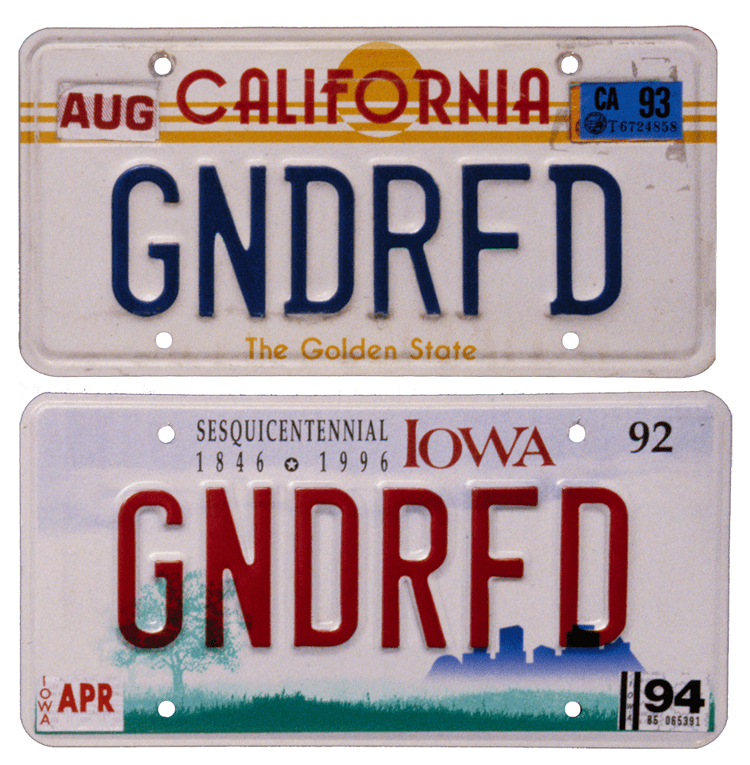
Returning to Iowa
In fall 1989, she began returning to Iowa for photo forays with a wide focus that took her to many parts of the state. Fortunately, she also photographed scenes closer to home, including the exterior of the homeplace house, but the interior was such a mess after final tenant had moved that she could not bear to photograph the rooms, considering how they looked so different than she remembered them being when she visited her grandparents in the 1940s and 50s. She learned, however, that her brother, Charles, who owned the place planned to have the house razed during the upcoming winter. During the fall trip, she was alarmed to see how many farmsteads along the road where she had grown up had been partially or completed cleared to become part of the crop-growing fields. She started photographing those sites. She also learned that Rolfe High School would no longer have a high school after the upcoming school year. Helen would return to the Rolfe area in March and again in May 1990 to document the razing of her family’s homeplace house and the school’s last senior class.
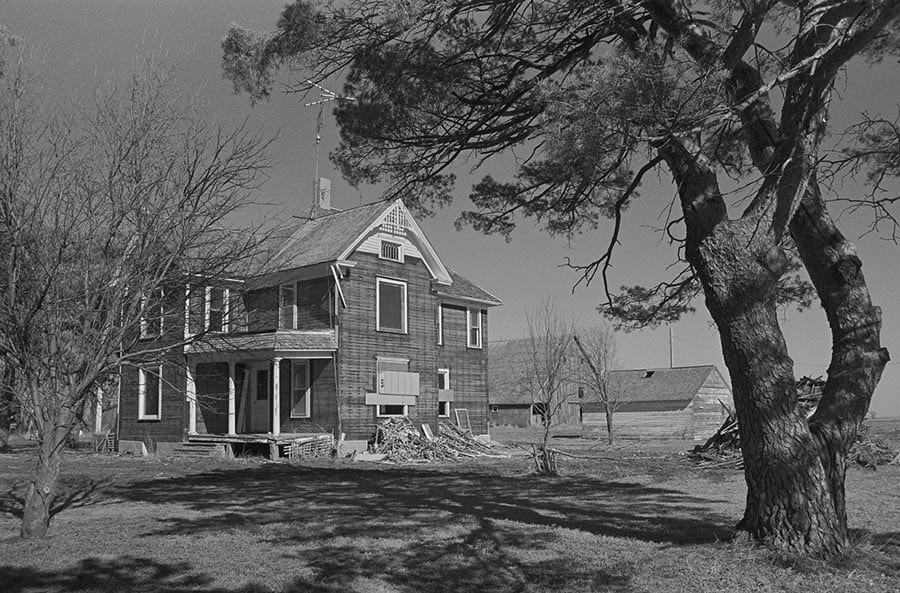
Helen moved back to Iowa in 1993. That year and again in 1994, she enrolled in summer weekend writing workshops at the University of Iowa. In the mid-1990s, Helen collaborated with Bob Lindemeyer, director of the Media Production Unit at Iowa State University, and applied for grant money from the Iowa Sesquicentennial Commission to conduct video production workshops in several communities in preparation for the state’s sesquicentennial. As part of that project, Helen created a video, Doing Local History with Video, which was distributed to all public libraries in Iowa, for that project.
It was inevitable that Helen would outgrow linear, Super VHS editing with its many limitations and be drawn to non-linear, digital technology. As an independent producer in the 1990s, however, she could not afford to buy the computer hardware or software needed for video editing. Fortunately, she was able to hire Bill Kuhn of Kuhn Productions in Des Moines to help her produce a video introduction to her road project in 1997 and a montage of Rolfe High School movies (the rough footage filmed in the 1950s by Superintendent Ralph Mortensen) for the school’s all-class reunion in 2000.
By 1999 Helen was able to equip her own computer with audio editing software. Then in 2001 she installed video editing software and produced Growing against the Grain, a video about the work of Audubon County Family Farms (southwest Iowa) in sustainable agriculture and direct marketing their products.
Also, she created the black and white photographs (not the color cover photo) for ISU rural sociologist Mike Bell’s book, Farming for us All, about the Practical Farmers of Iowa organization.
Helen continued to use film for still photography until spring 2004 when she purchased her first digital still camera, a Canon Rebel, and appreciated the quality of images it produced and how much fun she had using digital equipment.
That same year, she formatted a large book about the road she grew up on, but it lacked a final chapter. She did not take up the challenge of writing for the book again until 2019. The first volume of her two-volume anthology consists primarily of chapters from the 2004 book, while the second volume consists of chapters written in 2019 and an unexpected additional chapter completed on July 31, 2020, about living in the early months of the COVID-19 pandemic.
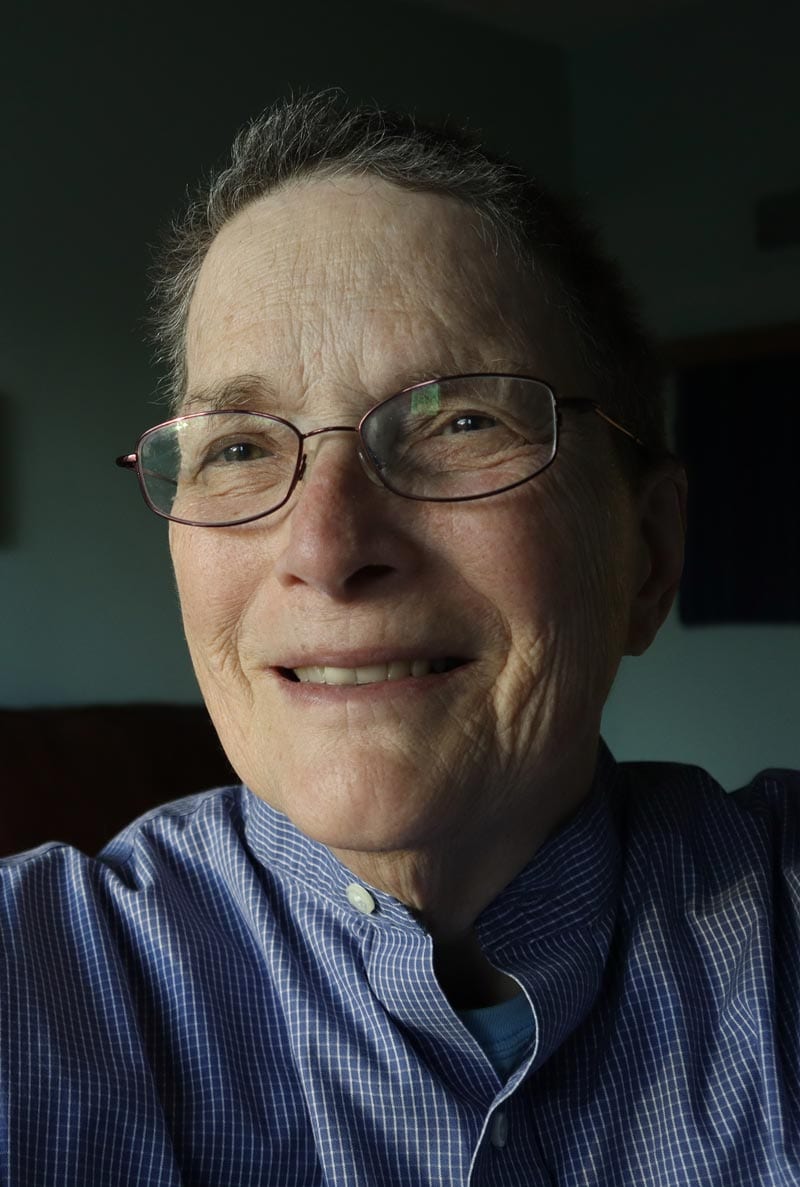
She has divested of most of her equipment for still photography and owns only one still camera, a Canon EOS model M50, with no extra lenses. She also owns a Tascam DR-100MKII audio recorder and JVC model GY-HM150U camcorder.
She enjoys working with WordPerfect software for writing and with Adobe Photoshop, Premiere Pro, and InDesign software for photo editing, video editing, and desktop publishing.
She has stored digital files of her photographs, audio interviews, and video footage on compact disks (CDs) and external hard drives, making them handy for her use. Her collection of original photographic negatives and slides, movie film, audio tapes, papers, digital files, and other materials is housed at the Iowa State University Special Collections and Archives.
In recent years, she has focused on finishing her book and tending to her urban farm, meaning she has used the audio-visual tools very little. She hopes, however, to focus, on editing video programs from her archived footage following the release of her book and knows that video editing is a great wintertime activity.
In Appreciation
As has been the case for many people, computers and other digital technology have been a boon to her work. She would never want to go back to the days of developing her own black and white negatives and printing them, waiting for a store to process color film, editing movie film or audio tapes with a razor blade, risking damage to film footage when showing it in a projector, or distributing audio cassettes or VHS tapes to share her audio and video programs. Nor would she want to return to the days of typewriters. Then again, she is glad she learned the basics of photography and film production long before the digital era.
Helen has often said she finds great satisfaction in being able to look at something ordinary and see beauty or meaning in the scene. She says, “I feel privileged to be able to shape what I see into works of art and share them with other people. Whatever the medium of artistic expression, I hope that some of what I produce is soulful and helps others reflect on life beneath the surface of things.”
